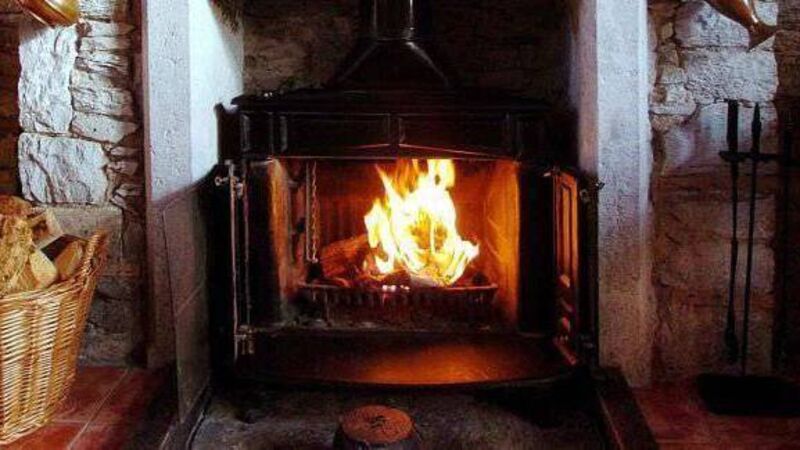High levels of air pollution recorded in several Munster towns

PM levels are usually at their highest during winter months due to emissions from fires and stoves from increased burning of solid fuels.
A high number of incidents of air pollution was recorded in a number of towns last year including Ennis, Co Clare and Tralee, Co Kerry.
New figures published by the Environmental Protection Agency show air quality levels exceeded the recommended daily limit for particulate matter (PM10) of 50µg/m³ on 21 days in Ennis during 2022 and 14 days in Tralee.
Other monitoring stations where there were a relatively high number of daily exceedances of the PM10 limit were Ringsend, Co Dublin (11); Edenderry, Co Offaly (10); Longford, Co Longford (9); Macroom, Co Cork (7) and Letterkenny, Co Donegal (6).
Particulate matter are very small particles of dust, soot and smoke which come mainly from the burning of solid fuel including coal, peat and wood for heating purposes.
PM levels are usually at their highest during winter months due to emissions from fires and stoves from increased burning of solid fuels.
However, the EU limit on PM10 levels is only considered breached if there are more than 35 exceedances during a 12-month period.
EPA figures show all the PM10 exceedances in Ennis occurred in the periods January-March and October-December last year.

They also reveal that air quality reached the maximum 10 rating classified as “very poor” in Ennis on a total of nine days in 2022.
The highest PM10 level recorded last year at the monitoring station in Ennis — which is located within the grounds of Ennis Town Council, close to the centre of the town — was on December 10 when it averaged 158.7µg/m³, over three times the recommended safety limit.
The latest figures show five exceedances of the 50µg/m³ limit were also recorded in Ennis in the first month of 2023 — the highest number of any monitoring station across Ireland — including one day when air quality was “very poor.”
A former mayor of Ennis, Cllr Johnny Flynn, said the scale of the problem of air pollution in the town revealed by the EPA figures was “shocking.”
Mr Flynn, a Fine Gael member of Clare County Council, said the problem was exacerbated by the geographical location of Ennis which he said was “like in a bowel”.
"During a cold snap with very little wind, you can get a concentration of fumes from solid fuel burning which tends to just hang in the air,” said Mr Flynn.
He expressed concern that there are around 1,000 homes within the vicinity of the monitoring station in Ennis.
Mr Flynn also noted a recent medical study which highlighted a correlation between a spike in air pollution levels and attendances at the emergency departments of hospitals in Ireland.
“We don’t have a hospital in Clare providing 24/7 emergency care, so people from the county often have to go to University Hospital Limerick, which already has a major crisis of patients on trolleys,” he added.
Mr Flynn has called on council officials to examine the introduction of a new air monitoring system which would be capable of providing advance forecasts and warnings of poor air quality levels in Ennis.
“It would allow people to be alerted to times when there would be high concentrations of particulate matter and could advise people who are vulnerable to stay indoors,” said Mr Flynn.
Meanwhile, the monitoring station in Tralee, which is located at the Kerry County Library in the town, recorded three days where air quality was classified as “very poor” among the 14 exceedances of the 50µg/m³ limit last year.
Overall, the EPA figures show only 16 out of 58 monitoring stations, which compiled data on PM10 levels last year, did not exceed the 50µg/m³ limit on any day during 2022.
They include stations in Drogheda, Cobh, Carrick-on-Shannon, Bray, Portlaoise, Roscommon, Sligo, Killarney, Greystones, Claremorris, Carlow as well as locations in Cork and Galway.
The main source of air pollution in Ireland is particulate matter from the burning of solid fuels and nitrogen dioxide from transport emissions.
According to the EPA, air quality in Ireland is generally good, although it claims there are concerning localised issues which can impact on air pollution levels.
The EPA pointed out that Ireland had met all of its EU legal requirements in 2021 — the latest year for which complete data has been verified — but had not met new, more stringent health-based guidelines from the World Health Organisation.
The new WHO guidelines, which are not legally binding, have set a target of 15µg/m³ for annual average PM10 levels with a daily maximum level of 45µg/m³.
According to the WHO, air pollution can increase the risk of stroke, heart disease, lung cancer and both chronic and acute respiratory diseases including asthma.
It is estimated that 1,300 premature deaths each year in Ireland are attributable to air pollution, with most cases linked to cardiovascular disease.
“The choices we make in how we heat our homes and how we travel directly impact the quality of the air we breathe,” said the EPA.
The latest figures show there were no exceedances of recommended safety limits of nitrogen dioxide and ozone at any monitoring stations in the Republic last year.













